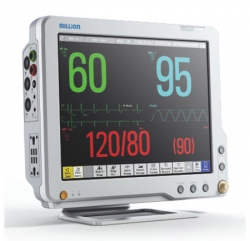Wechat QR code

TEL:400-654-1200

TEL:400-654-1200

Structure and type
No matter what kind of blood oxygen probe, its sensor consists of two luminous tubes and a photocell. One of the LEDs emits visible red light with a wavelength of 660 nm, and the other LED emits invisible infrared light with a wavelength of between 920 and 950 nm. The difference between the various types of probe components is not very large. There are different. Its internal structure can generally be divided into 3 types. The author divides it into AC type, common positive type and common negative type in his own language. The structures are illustrated in Figure 2, Figure 3 and Figure 4, respectively. Different polarity connections, different types of light, the signal reception and output are different. The internal structure of the blood oxygen probe is roughly the same, and some of them have resistances with different resistances at the joints, which are used as probes for connecting and disconnecting the probe.

Common malfunctions
One is the failure of the probe itself, and the other is caused by external factors of the probe.
The failure of the probe itself is mainly focused on the disconnection of the cable line, the burning of the light emitting tube, the photocell, or the decrease in the efficiency of transmission and reception. Under normal circumstances, it can be judged by static measurement to determine whether it is good or bad, and then it is specifically excluded for the fault point. The faults caused by the external factors of the probe are mainly concentrated on noise interference, serious patient tremors or finger keratinization, probe firing, unclean reception, and light leakage. If such faults are found, the probes should be cleaned and the connectors must be reinforced. Correct use can be eliminated on site. Current monitoring instruments generally have an alarm function. The fault codes or prompts in the alarm are one of the shortest ways to find the cause of the fault.